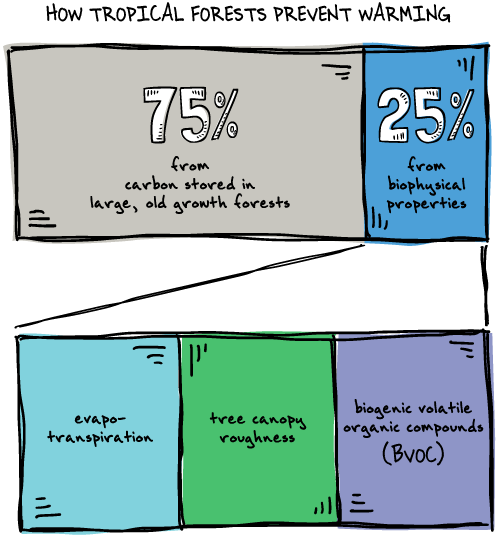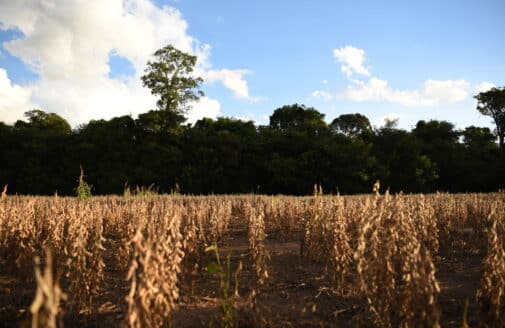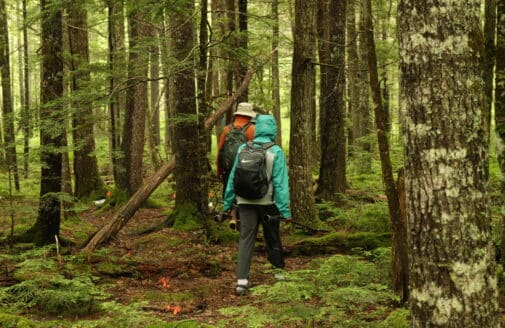Tropical forests holding back 1 degree of warming
A study breaks down the mechanisms that make forests so valuable in combating climate change

Hazy Amazon forest canopy.
photo by Paulo Brando
Forests are one of our best natural climate solutions for combating increasing global temperatures. A study from researchers at the University of Virginia and Woodwell Climate Research Center found that avoiding tropical deforestation could prevent more than 1 degree Celsius of atmospheric warming.
About 75% of that temperature change comes from the release of carbon stored in the large old growth forests. But there is another 25% that comes from changes in the biophysical properties of forests.

graphic by Julianne Waite
One important biophysical property is evapotranspiration. Through photosynthesis, plants release water vapor into the air that contributes to cooling near the ground and cloud formation higher in the atmosphere that reduces incoming solar radiation.
A second biophysical property is the roughness of the tree canopy, which disrupts air flow above the forest. The more uneven the canopy, the more turbulent the air, which disperses heat away from the surface. In the tropics, evapotranspiration and canopy roughness are high, which means that surface temperatures remain relatively low and dispersed throughout a deep atmosphere.
The picture gets more complicated when you factor in compounds called biogenic volatile organic compounds (BVOC) that forests naturally produce. These compounds can either contribute to cooling by encouraging the formation of clouds, or to warming by creating ozone and methane. In the tropics, the net effect of BVOCs is cooling.
Outside of the tropics, different biophysical effects dominate. In the Arctic, the ability of different surfaces to reflect energy plays a large role in regional cooling. Features like snow cover can dramatically impact the amount of reflection.
The study shows that protecting forests is vital to combating climate change. Forests are not only key to storing and sequestering carbon, but also to regional adaptation as temperatures rise. Their innate properties keep us cool.







